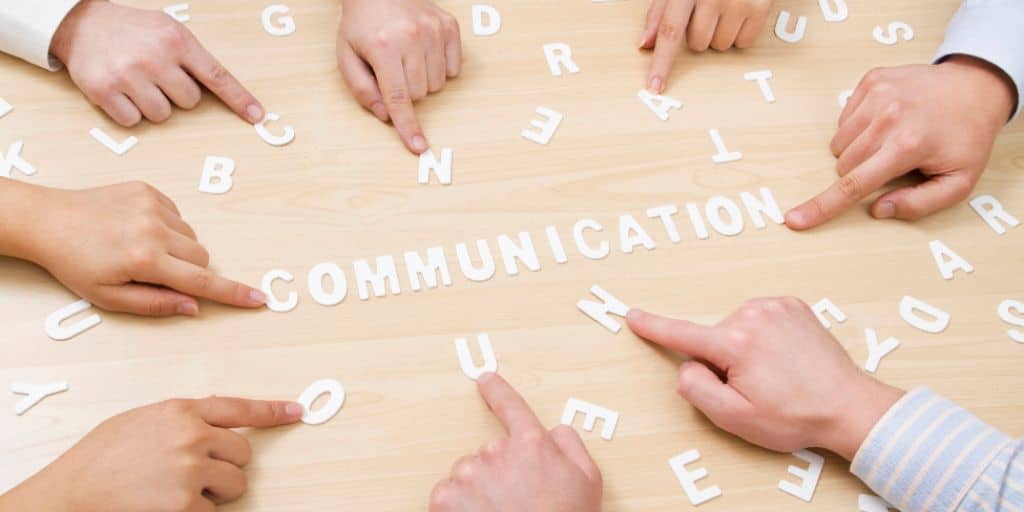In the dynamic world of law, there’s one invaluable tool that stands out as the master key to success – communication. Communication isn’t just a foundational pillar for building relationships or the driving force behind decisive actions; it is, in fact, an intricate art. Mastering the art of communication is an ongoing process and requires tailoring your message to suit the unique audience you are addressing.
To create quality relationships with your clients and build your law practice successfully, you need to understand the art of communication and how to skillfully apply it. Communication extends far beyond the legal documents your clients put their signature to. Effective communication requires an understanding of various elements, including tone, body language, active listening, emotional intelligence, and the practice of constructive dialogue.
Set Your Tone & Manage It
Tone encompasses intonation, volume, projection, and infusing your words with emotion. The tone you have and carry throughout a conversation is nearly as important as the words themselves. All your words will fall flat if you speak in monotone, making it immensely challenging for anyone to stay engaged. On the other hand, exaggerating everything you say can be exhausting for your listener.
Tone is what creates the shape of what you’re saying. The way you normally speak, without added intonations or emotions, is what you can consider as your core tone. Once you grasp your core tone, you need to manage your pitch and volume to add emotions and create emphasis where needed.
In heated discussions, pause to prevent counterproductive responses, keeping your tone steady to steer the conversation. The way you design different tones around your words will allow your listener to capture what you’re saying in the way you intend.
Body Language Matters
According to Albert Mehrabian, 55% of communication is non-verbal. That is quite substantial when you think about how powerful words are!
If you are communicating face-to-face, be sure to exhibit open body language. Avoid any poses that are closed off or any lazy postures. Sit up straight, or even slightly forward. This will set forth the clear intention that you are engaged in the conversation.
Your facial expressions and body language can either intensify or defuse the situation. To maintain your professional appearance, find a balance between relaxed and overly stiff. Employ subtle hand and body movements for a more engaging and human interaction.
Non-verbal communication can work for or against your message, so be mindful of the body language you demonstrate alongside the words you’re using.
The Practice of Active Listening
Active listening is not something you can just read about and know. It is a skill that takes practice.
Building a sense of being heard and understood by your client begins with active listening as its foundation. Clear your mind of distractions and give them your full and undivided attention. When you are actively listening, you are not thinking of your response, a counterpoint, or thinking about what you’ll have for lunch. If your mind is anywhere else, your client will feel that. If you aren’t actively listening, you are only hearing words.
A well-known professional practice when having a meeting or discussion is to take notes. At the beginning of the discussion, ask if it’s okay for you to take notes. You can dodge an awkward or uncomfortable reaction from your client mid-conversation if you are upfront with your intention of jotting a few things down throughout the conversation.
Avoid interrupting. When a thought comes to mind as you listen, jot down a 1-3 word note to jog your memory on what you want to bring up when it’s your turn to speak. When it is time for you to speak, rephrase or paraphrase what you understood your client to be saying, and ask any pending questions you may have jotted down.
Sometimes, closed-ended questions are necessary to get a simple and clear answer. However, when it’s not necessary, open-ended questions are great to encourage your client to talk and share additional information without you having to prompt them. This is also beneficial in creating an environment where your client feels you are genuinely interested, a belief substantiated by your active listening.
An example of a closed-ended question you might ask your clients could be: “Did you achieve the desired results?” In contrast, when posed as an open-ended question, you might ask: What were the results you were aiming for?” It’s worth noting that a slight change in the question can yield vastly different responses.
Build Your Emotional Intelligence
People communicate verbally, non-verbally, and with written word. However, capturing the way someone feels about something can be challenging. Many people are private and keep their feelings close to the chest, which can make it difficult to respond or comfort people in tough situations.
Emotional Intelligence is a skill that will help you understand people in a way that allows you to create a comfortable space by acknowledging their situation and showing empathy for what they are going through. Being capable of empathy and compassion will equip you to communicate with tone and body language.
How do you sharpen this skill? It begins with self-awareness – understanding your own emotions and their impact. You will first need to start with yourself before you can begin to understand others. The path towards emotional intelligence involves four main components: self-awareness, self-regulation, social awareness, and social skills. You can improve these elements by recognizing your emotions, asking for feedback to audit your self-perception, and by reading inspiring literature that offers different perspectives. By understanding yourself first, you’ll be better equipped to comprehend others, ultimately improving your ability to communicate with them effectively.
Be Clear and Concise
During challenging legal situations, clients often find comfort in clear and straightforward communication. Legal jargon can exacerbate emotions already running high. Using plain language can lower the barrier between a legal professional and a layperson.
Simplifying your messaging ensures that your client fully comprehends your advice. Think of it like understanding 3/4, which is far easier than grappling with the complexity of 18/24.
What Forms of Communication Are Best?
This comes down to tailoring your communications to who you are speaking to. Some people prefer a phone call, others would rather read an email, and some want a face-to-face appointment. You need to sharpen your communication skills with all these methods so you can be prepared to accommodate your client’s preference.
No matter what the primary communication preference is, the written word plays a crucial role. If you have a phone call or a face-to-face meeting with a client, it’s important for both parties to avoid relying on memory to recall what was communicated.
What may appear minor or inconsequential during the conversation can become significant when a situation arises that necessitates recollection. To ensure clarity and prevent misunderstandings, it’s advisable to follow any verbal communication with a written recap or summary. This practice not only safeguards against potential disputes, but also serves as a valuable reference for all parties involved.
Prepare in Advance for a Constructive Conversation
Going into a conversation blind is a surefire way to create ineffective communication and produce an unfavorable outcome.
Prepare for any call or meeting by knowing what it is about and what the objective is. Do some research on the topic and note any possible solutions, ideas, or references that will support the conversation. Think about the conversation in its entirety. Envision the dialogue and possible variables. Try to consider what your client may ask or how the conversation could go sideways.
Be a proactive communicator by being prepared. It may surprise you how much time you’ll save on the backend.
Empower your Team with a Communication Strategy Guide
One miscommunication can unravel all the hard work you put in to ensure clear communication with your client. Make sure your team is prepared to continue the smooth communication experience you’ve laid out.
Create guidelines that your staff and team members can follow, aligning with the tone you’ve set for your law practice. This will not only help your client feel as though you are truly there with them every step of the way, but this will enable your team to communicate effectively with ease. Simplifying the communication process within your team is instrumental in minimizing frustrations and ensuring a smoother client experience.
These guidelines should include internal communications as well. The flow of clear, consistent, and relevant information should extend beyond client communications. Lay out clear guidelines and expectations for your team to ensure that information and updates are consistent, direct, and relevant.
Continue to Improve and Sharpen Your Communication Skills
Don’t just learn a few tips and draft up a guide. People are different, situations are unique, and life comes in waves of change. Skills and knowledge will dull if not maintained and expanded. Prioritizing continuous improvement when it comes to communication will help your law firm stay ahead of competitive curveballs.
Remember the following as you embark on your journey to enhance your communication skills:
- Steer clear of overcomplicating any message.
- Tone is about how you say something.
- Body language matters more than you think.
- Active listening is a best practice that requires focus.
- Preparation is important for constructive conversations.
- Create a Communication Strategy Guide for your business.
- Send a written summary after every verbal communication.
Keep moving forward and your law practice thriving by continuing to expand and enhance the way you communicate and how you connect with others.


